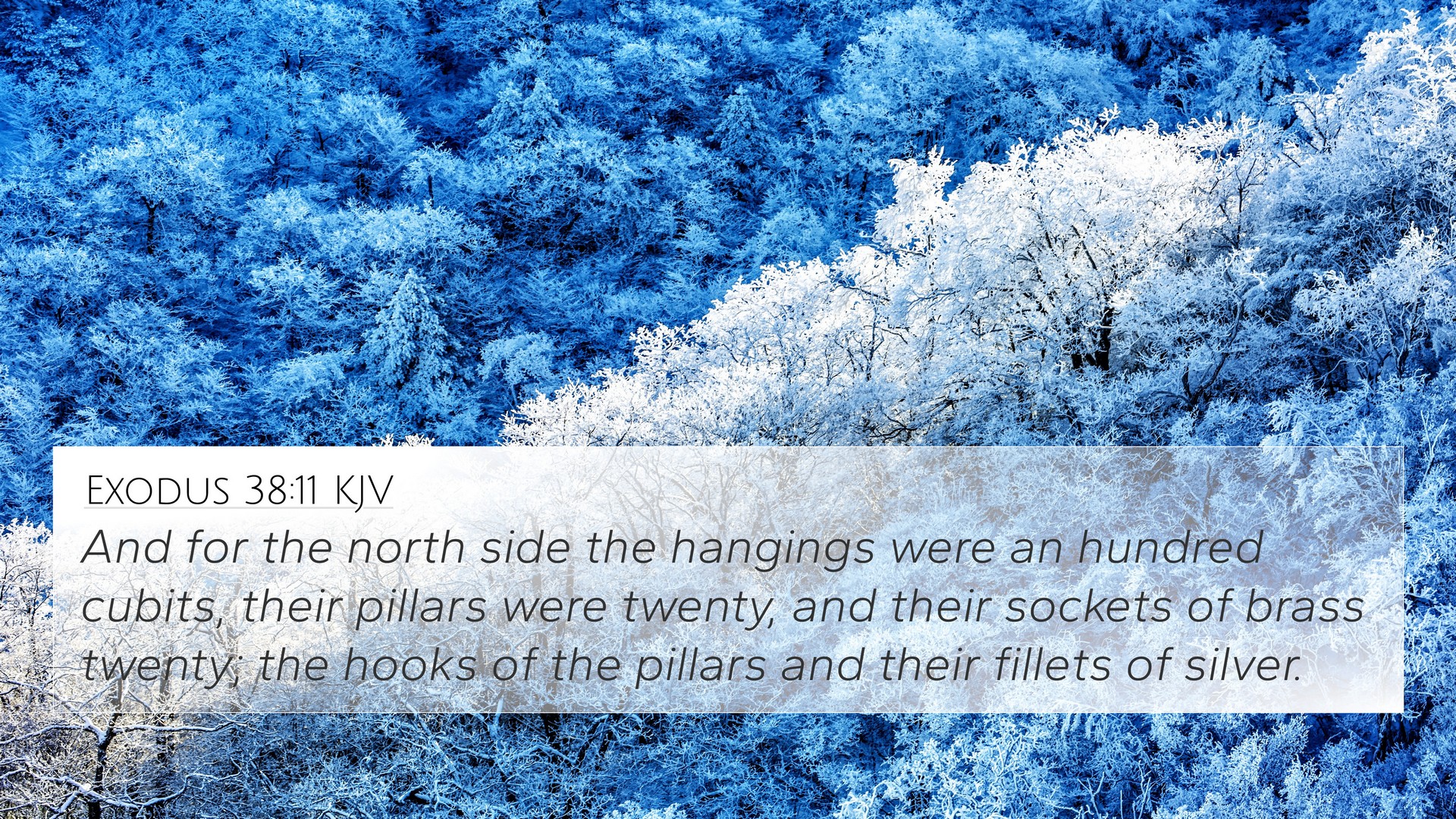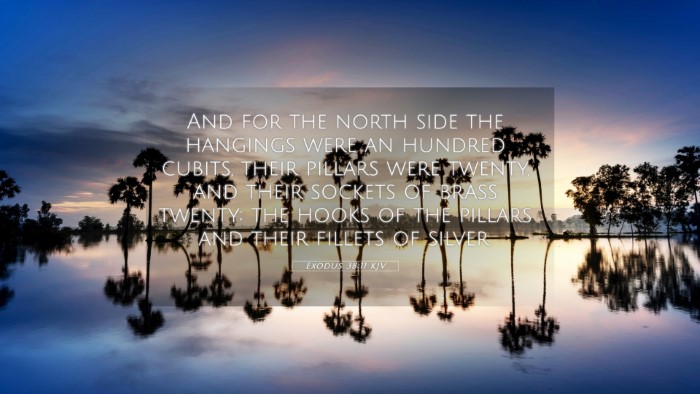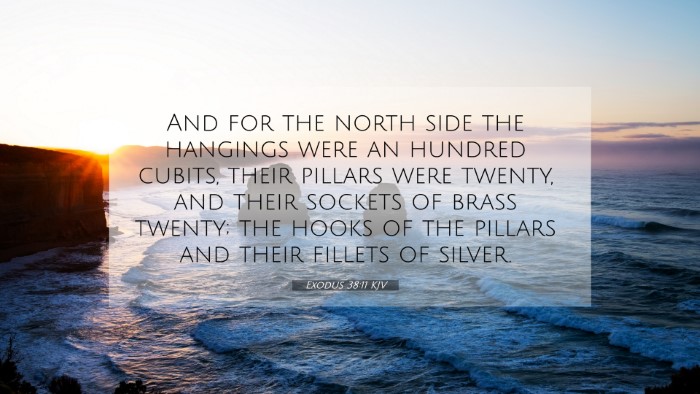Understanding Exodus 38:11
Exodus 38:11 states: "And for the west side of the tabernacle, the hangings were of fine twined linen, an hundred cubits: their pillars were twenty, and their sockets of brass; the hooks of the pillars and their fillets of silver."
Context and Importance
This verse is part of the detailed description of the construction of the Tabernacle, which served as a central place of worship for the Israelites during their exodus from Egypt. It highlights the specific materials and dimensions used for the western side of the Tabernacle, emphasizing both the aesthetic and functional aspects of its design.
- Connection to the Divine Dwelling: The Tabernacle represents God's presence among His people. The materials used signify purity and value, further indicating the holiness of the location.
- Symbolism of the Elements: Fine twined linen is often symbolic of righteousness, while brass can be associated with judgment. These materials contribute to the overall thematic richness of the Tabernacle's construction.
Commentary Insights
Matthew Henry notes that the detailed specifications of the Tabernacle, including the west side, emphasize the reverence and care that the Israelites were to have toward worship. Albert Barnes points out the significance of silver and brass, associating them with redemption and strength, representing the duality of God’s grace and the judgment that comes from sin. Adam Clarke elaborates on the necessity of such specifics in the worship context, as they invoke a sense of orderliness and divine purpose.
Thematic Connections
- Divine Presence: Exodus 25:8 - "And let them make me a sanctuary; that I may dwell among them." This highlights the purpose of the Tabernacle as a dwelling place for God among His people.
- Preparation and Holiness: Exodus 26:31 - "And thou shalt make a vail of blue, and purple, and scarlet, and fine twined linen of cunning work." This points to the holiness required in approaching God.
- Symbolism of Materials: Revelation 21:18 - "And the building of the wall of it was of jasper: and the city was pure gold, like unto clear glass." This emphasizes the eternal nature of God's kingdom and its foundations.
- Restoration and Redemption: Hebrews 9:2 - "For there was a tabernacle made; the first, wherein was the candlestick, and the table, and the shewbread; which is called the sanctuary." This underscores the significance of the Tabernacle in the New Covenant context.
- God’s Instruction: Exodus 25:9 - "According to all that I show thee, after the pattern of the tabernacle, and the pattern of all the instruments thereof, even so shall ye make it." This emphasizes the importance of obedience to divine design.
- New Testament Parallels: John 1:14 - "And the Word was made flesh, and dwelt among us." This speaks to how Christ fulfills the ultimate purpose of the Tabernacle, being God incarnate amongst His people.
- Worship and Community: 1 Peter 2:9 - "But ye are a chosen generation, a royal priesthood, an holy nation, a peculiar people..." This highlights the calling for the believers as a temple of God, drawing parallels between the Old and New Testament worship forms.
Conclusion
Exodus 38:11 provides crucial insights into the nature of worship and the significance of the Tabernacle. By examining this verse through the lenses of various commentaries and cross-referencing other Biblical texts, one can see the intricate connections that reveal a deeper understanding of God's relationship with His people. The detailed instructions serve not only as historical record but as a continual reminder of the holiness of God and the gravity of His presence among His followers.


